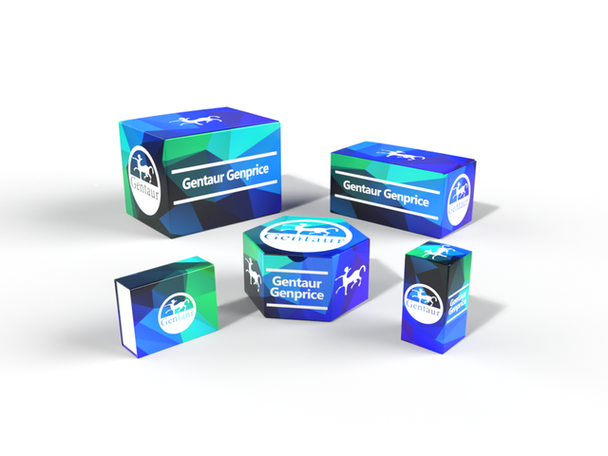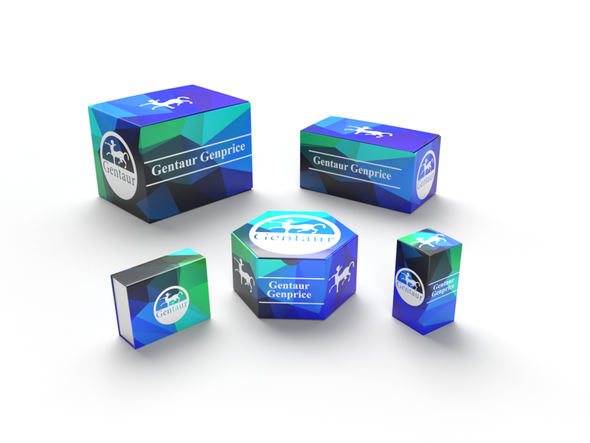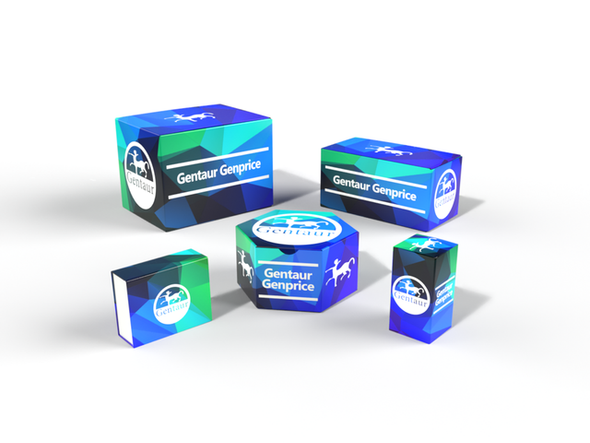740
Human 8-Hydroxy-desoxyguanosine (8-OHdG) ELISA Kit | AE22961HU
- SKU:
- 740-AE22961HU
- Availability:
- Usually ships in 5 working days
Description
Human 8-Hydroxy-desoxyguanosine (8-OHdG) ELISA Kit | AE22961HU | Gentaur UK, US & Europe Distribution
Species Reactivity: Human (Homo sapiens)
Abbreviation: 8-OHdG
Alternative Name: N/A
Application: ELISA
Range: 12.5-800 ng/mL
Sensitivity: 6.0 ng/mL
Intra-Assay: ≤3.9%
Inter-Assay: ≤7.5%
Recovery: 0, 97
Sample Type: Serum, Plasma, Other biological fluids
Detection Method: Sandwich
Analysis Method : Quantitive
Test Principale: This assay employs a two-site sandwich ELISA to quantitate 8-OHdG in samples. An antibody specific for 8-OHdG has been pre-coated onto a microplate. Standards and samples are pipetted into the wells and any8-OHdG present is bound by the immobilized antibody. After removing any unbound substances, a biotin-conjugated antibody specific for 8-OHdG is added to the wells. After washing, Streptavidin conjugated Horseradish Peroxidase (HRP) is added to the wells. Following a wash to remove any unbound avidin-enzyme reagent, a substrate solution is added to the wells and color develops in proportion to the amount of 8-OHdG bound in the initial step. The color development is stopped and the intensity of the color is measured.
Product Overview: 8-oxo-7, 8-dihydro-2 deoxyguanosine (8-OHdG), is probably the most important product of "oxidative stress” in DNA. Its concentration in DNA is, in fact. a quantitative analysis of the degree of DNA damage that an organism has undergone. Due to the importance of 8-OHdG of nucleic acidg in mutagenesis, carcinogenesis and aging, numerous chemical and biological investigations have been made on this subject in the past time. Kuchino and co-workers have found that 8-OHdG residue in DNA is misreading during the process of DNA replication. Recently, some reports have been presented on high 8-OHdG levels in patients suffering from various diseases such as chronic hepatitis, Fanconi s anemia, diabetes mellitus and Helicobacter pylori infections. As a result, 8-OHdG is a useful marker for the study of DNA damage arising from reactive oxygen species and is of great significance for cancer research.
Stability: The stability of ELISA kit is determined by the loss rate of activity. The loss rate of this kit is less than 5% within the expiration date under appropriate storage condition. The loss rate was determined by accelerated thermal degradation test. Keep the kit at 37°C for 4 and 7 days, and compare O.D.values of the kit kept at 37°C with that of at recommended temperature. (referring from China Biological Products Standard, which was calculated by the Arrhenius equation. For ELISA kit, 4 days storage at 37°C can be considered as 6 months at 2 - 8°C, which means 7 days at 37°C equaling 12 months at 2 - 8°C) .










